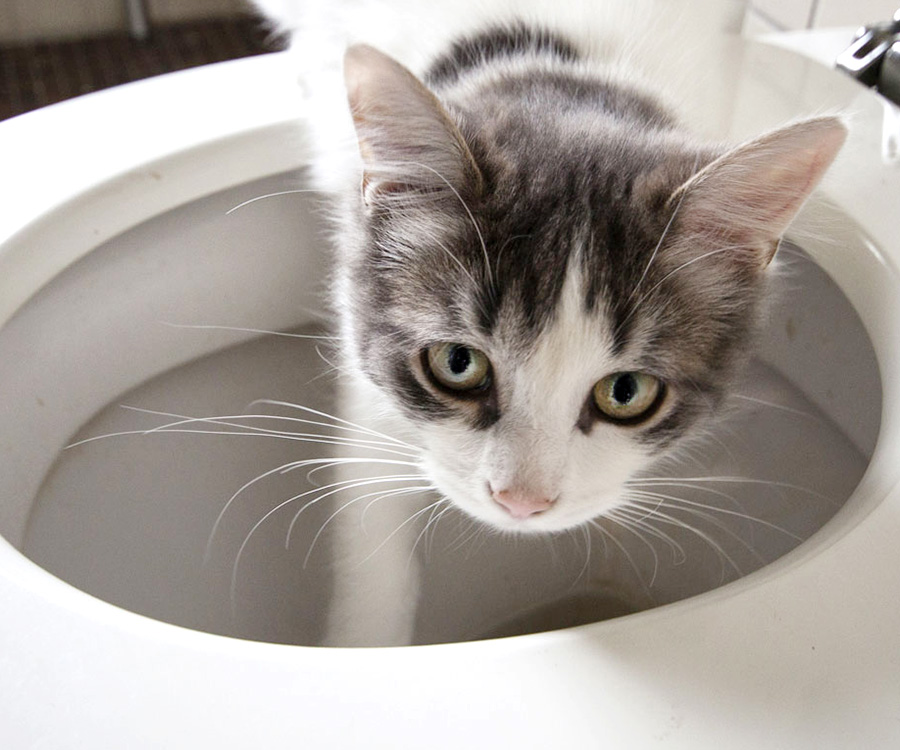The Dangers of Flushing Cat Poop Down Your Toilet - Advice for Safer Disposal
The Dangers of Flushing Cat Poop Down Your Toilet - Advice for Safer Disposal
Blog Article
What are your opinions about Don’t flush cat feces down the toilet?

Introduction
As feline owners, it's essential to bear in mind just how we take care of our feline close friends' waste. While it might seem hassle-free to purge feline poop down the bathroom, this method can have detrimental consequences for both the setting and human wellness.
Environmental Impact
Purging feline poop presents hazardous microorganisms and parasites right into the water supply, presenting a significant threat to water environments. These impurities can adversely affect marine life and compromise water quality.
Health Risks
In addition to environmental problems, purging cat waste can likewise position health and wellness risks to humans. Cat feces might include Toxoplasma gondii, a parasite that can trigger toxoplasmosis-- a possibly severe illness, especially for expectant women and people with damaged immune systems.
Alternatives to Flushing
Fortunately, there are safer and a lot more liable means to dispose of feline poop. Take into consideration the following options:
1. Scoop and Dispose in Trash
One of the most common approach of throwing away pet cat poop is to scoop it into an eco-friendly bag and toss it in the trash. Make certain to make use of a devoted trash scoop and throw away the waste quickly.
2. Use Biodegradable Litter
Go with biodegradable pet cat trash made from materials such as corn or wheat. These trashes are eco-friendly and can be safely gotten rid of in the trash.
3. Bury in the Yard
If you have a lawn, consider burying cat waste in an assigned location far from veggie gardens and water sources. Make sure to dig deep adequate to prevent contamination of groundwater.
4. Install a Pet Waste Disposal System
Invest in a pet garbage disposal system especially designed for pet cat waste. These systems utilize enzymes to break down the waste, reducing odor and ecological impact.
Final thought
Liable pet dog ownership prolongs past providing food and sanctuary-- it also involves correct waste administration. By avoiding flushing feline poop down the bathroom and choosing different disposal techniques, we can minimize our ecological footprint and secure human health and wellness.
Why Can’t I Flush Cat Poop?
It Spreads a Parasite
Cats are frequently infected with a parasite called toxoplasma gondii. The parasite causes an infection called toxoplasmosis. It is usually harmless to cats. The parasite only uses cat poop as a host for its eggs. Otherwise, the cat’s immune system usually keeps the infection at low enough levels to maintain its own health. But it does not stop the develop of eggs. These eggs are tiny and surprisingly tough. They may survive for a year before they begin to grow. But that’s the problem.
Our wastewater system is not designed to deal with toxoplasmosis eggs. Instead, most eggs will flush from your toilet into sewers and wastewater management plants. After the sewage is treated for many other harmful things in it, it is typically released into local rivers, lakes, or oceans. Here, the toxoplasmosis eggs can find new hosts, including starfish, crabs, otters, and many other wildlife. For many, this is a significant risk to their health. Toxoplasmosis can also end up infecting water sources that are important for agriculture, which means our deer, pigs, and sheep can get infected too.
Is There Risk to Humans?
There can be a risk to human life from flushing cat poop down the toilet. If you do so, the parasites from your cat’s poop can end up in shellfish, game animals, or livestock. If this meat is then served raw or undercooked, the people who eat it can get sick.
In fact, according to the CDC, 40 million people in the United States are infected with toxoplasma gondii. They get it from exposure to infected seafood, or from some kind of cat poop contamination, like drinking from a stream that is contaminated or touching anything that has come into contact with cat poop. That includes just cleaning a cat litter box.
Most people who get infected with these parasites will not develop any symptoms. However, for pregnant women or for those with compromised immune systems, the parasite can cause severe health problems.
How to Handle Cat Poop
The best way to handle cat poop is actually to clean the box more often. The eggs that the parasite sheds will not become active until one to five days after the cat poops. That means that if you clean daily, you’re much less likely to come into direct contact with infectious eggs.
That said, always dispose of cat poop in the garbage and not down the toilet. Wash your hands before and after you clean the litter box, and bring the bag of poop right outside to your garbage bins.
https://trenchlesssolutionsusa.com/why-cant-i-flush-cat-poop/

I was shown that write-up about Can You Flush Cat Poop Down The Toilet? through a friend on another site. Do you know somebody who is excited about Don’t flush cat feces down the toilet? Feel free to promote it. Thanks for your time spent reading it.
Estimating Report this page